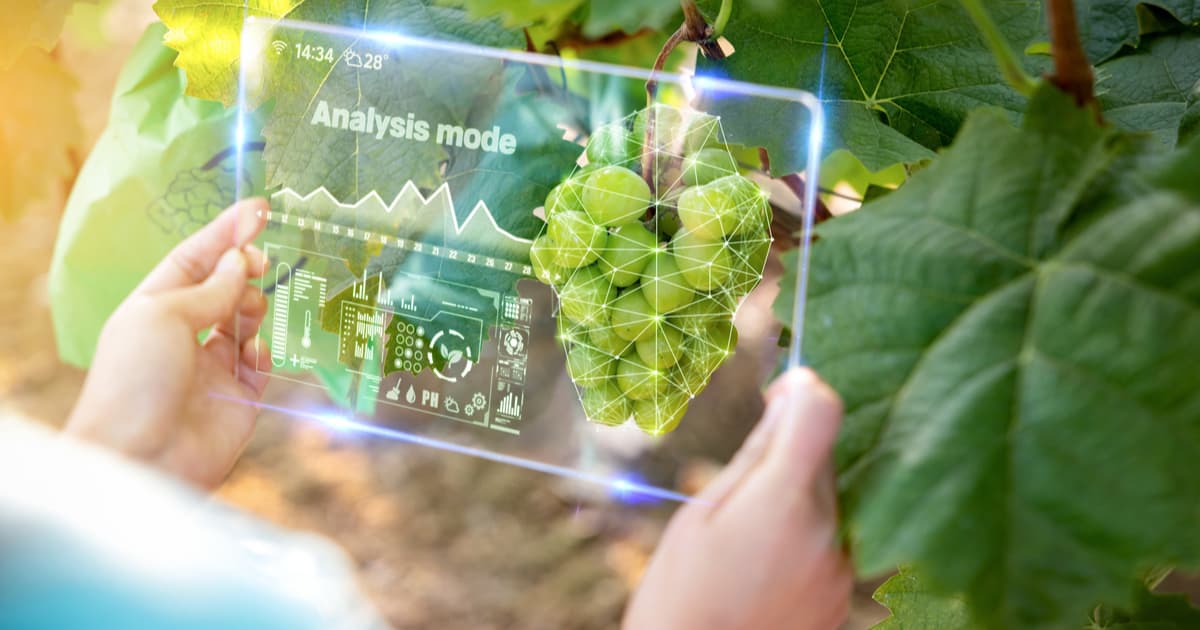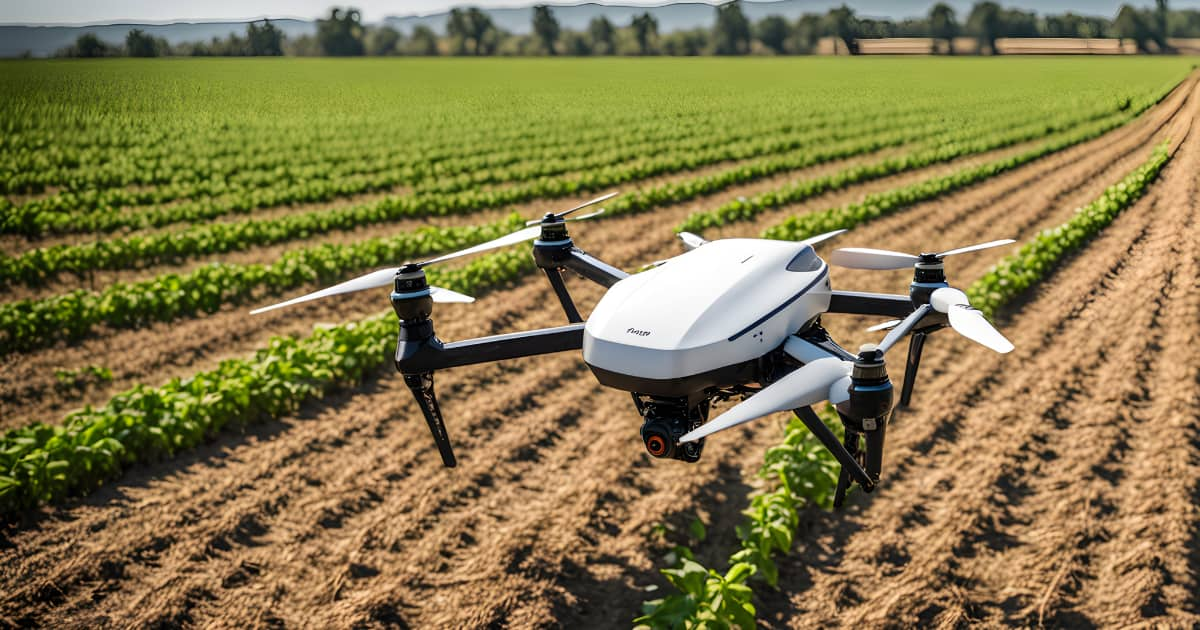Changing dynamics in climate, population, and dramatic weather events continue to adversely affect food and forestry systems. However, on the upside, the exponential growth in artificial Intelligence (AI) and machine learning(ML) promises new innovative solutions to realize efficiencies, sustainability, and precision across the board. The impact is already evident with leaders like Dejan Jakovlevic, FAO’s chief information officer, admitting that AI will impact the agri-foods systems1.
Studies show that there will be continued pressure on natural resources, with the world population set to breach the 9 billion mark by 20502. This will require a 70% increase in agri-food production3. It’s estimated that about 600 million people will be facing hunger by 20304.
Additionally, about 22.8 million hectares of forest were lost yearly between 2010-20205. Marine resources also continue to be depleted6. AI helps stakeholders in the agri-food and forestry sectors draw multiple advantages while pushing boundaries in these areas.
The Agriculture AI market is projected to reach $1.7 billion by the close of 2023. It’s expected to have a CAGR of 22.50%, expanding to $4.70 billion by 20287.
There are multiple use cases for AI technology, including optimization, forecasting and adaptive systems. This article discusses how AI impacts agricultural productivity, forestry, and fishing. We also uncover the benefits and challenges of using AI in these areas.
Key areas where AI impacts agriculture industry
Technological advancement has led to synergy between IOT, cloud, data availability, and improved computing resources is powering AI based growth in agricultural production.
Machine learning methods such as Decision Trees(DT), Principal Component Analysis(PCA), K-Nearest Neighbour(KNN), and XGBoost have had a significant impact, especially in monitoring and forecasting activities. Deep learning techniques such as Convolutional Neural Networks(CNN) are also valuable for classification, monitoring, and prediction.
Pest and disease management
FAO estimates that pests and diseases reduce crop yield by 20% to 40% annually8. Therefore, early detection of pests and diseases is crucial for timely intervention. AI can analyze large amounts of data from drones, satellite imagery, and sensors, enabling farmers to detect disease/pest infestation early.
Support Vector Machine(SVM) and CNN techniques like deep CNN are examples of algorithms that can be used for disease classification. Additionally, AI based systems can do feature extraction and determine the type of disease9.
It’s also possible to forecast pest occurrence depending on weather patterns using Long short-term memory networks10. Numerous services, such as Plantix, offer farmers AI-powered apps to detect pest/disease damage and recommend corresponding solutions11. These use image recognition technology and deep learning techniques to quickly classify images and detect anomalies.
Precision farming
The precision farming market hit $7.88 billion in 2022 and is forecasted to grow at a CAGR of 12.7% going to 203012. This approach aims to optimize agricultural production, reshaping conventional practices into automation and data-driven decision-making. Precision farming with AI helps farmers increase productivity through weed control, irrigation, harvesting, and pest control.
Farms can produce vast data from remote sensing, drones, and cameras. Data points include temperature, water use, weather, and soil, which AI and ML techniques can analyze in real-time to provide insights13. For instance, deep learning techniques such as CNN and LSTM can be used for irrigation optimization14. Such systems promote agricultural productivity through precise irrigation, therefore conserving water.
Autonomous robots and drones equipped with computer vision can precisely target plants and determine the amount of herbicide/pesticide to spray. Companies in this space are already integrating AI into their machinery for smart agriculture, especially in weed control15.
Livestock production
Farmers can use AI to monitor their animal welfare, including predicting disease outbreaks and optimizing feeding schedules. Monitoring the livestock in real-time is possible, which can help farmers use data to make data-driven interventions proactively.
By utilizing sensors and AI technology, farmers can track animal feeding patterns, including frequency and amount, to determine the animal’s well-being16. Tools like the sheep pain facial expression scale uses AI to detect signs of pain in sheep. This allows for the early detection of health issues and prevents the spread of contagious diseases17.
The impact of AI in forestry
The forest industry faces many challenges from external pressures such as wildfires and deforestation. Combining AI with aerial imagery and IoT sensors opens various ways to help manage and preserve forests. Here are some of the ways AI impacts forestry.
Protecting and sustaining forest ecosystems
Drones with sensors and cameras allow conservationists to collect data easily. The use of AI over this data helps uncover different types of insights, including:
- Proper classification of tree species
- Creation of high-resolution maps of the forest cover
- Monitoring the forest cover over time
- Identifying deforestation activities
Machine learning algorithms such as Linear Regression(LR), DT, and SVM are helpful in determining tree species distribution, prediction, and modeling tasks.
AI models can be trained with real-time satellite imagery, helping early detection of deforestation. WWF is using a similar AI-powered system that has already helped authorities in Gabon detect forest encroachment activities that threatened 74 acres of forest18.
Forest Fire detection and monitoring
Forest fires continue to ravage entire ecosystems. AI algorithms can analyze images, videos, and other thermal imaging from forest fire hotspots. This can help track fires in real time, helping in guiding firefighters to the correct spots.
As fires become wilder and more frequent, there’s a concerted effort to use AI to help fight these fires. It’s possible to use AI-powered cameras that scan for smoke, allowing responders to act quickly. For instance, California’s firefighting agency is testing an AI-powered system to help identify fires. The system uses computer vision algorithms to analyze video feeds from 1000 cameras on mountaintops19.
Disease Detection in Forests
AI can monitor forest health, helping detect changes caused by disease and pest infestation. These pose significant risks impacting timber production and biodiversity. Data is collected via drones, satellite imagery, and multispectral sensors.
Machine learning algorithms like DT and Genetic Algorithm(GA) can be used to analyze this data to detect disease outbreaks. For instance, research into early identification of Pine Wilt disease has shown promise, delivering 90% accuracy using spectral imagery from forests20.
The impact of AI in fishing
AI in fishing is set to play a critical role in the fisheries industry, especially when augmented with data from remote sensing and big data analytics. Here are some areas in which AI influences the fishing industry.
Deterring illegal fishing
Identifying a ship’s characteristics, such as its size and activity at sea, is possible. This aids conservationists and other stakeholders identify and classify fishing vessels on high seas and what’s being fished.
Platforms like the Global Fishing Watch use AI to analyze data from automatic identification systems (AIS), vessel monitoring systems, and satellites to understand global fishing patterns. The platform uses CNN to classify each vessel as fishing or non-fishing. Additionally, the platform monitors long-line fishing and fish behavior, which helps authorities track compliance21.
Fisheries management
It’s possible to analyze real-time imagery and video feeds using deep learning models to identify, count, and determine the density of the fish22. Estimating the number of fish is critical to promoting sustainable fishing, avoiding overfishing, and enforcing regulations.
Using AI-driven tools in fish recognition helps in various operational aspects of fishing, like cost reduction and manual labor. It promotes trust by helping aquaculture farmers and other fisheries stakeholders build harmony and manage the resource.
The Benefits and challenges of using AI in agriculture, forestry, and fishing
AI has the potential to significantly impact agriculture, forestry, and fishing, resulting in multiple benefits. However, different challenges impede the use of this technology.
Benefits
Optimizing resource use: Precision farming, autonomous machines, predictive analytics, and predictions help increase productivity through resource optimization. Autonomous machinery can weed expansive fields within short periods, significantly reducing the need for manual effort and herbicide/pesticide.
Enhancing yields: Using AI to identify patterns and give recommendations makes it possible to increase yields exponentially. Using such insights to identify planting patterns, harvesting, and even selecting the most suitable plant species goes a long way.
Assist in sustainability: Using AI-powered tools to track resources in forests and fishing ecosystems helps avoid over-exploitation. Using remote sensing and live feed helps detect illegal fishing and logging. Additionally, by monitoring species, stakeholders can proactively manage resources and preserve biodiversity.
Reduced costs: Precision farming leads to optimal use of resources like water, herbicides, and fertilizers. This reduces wastage and the cost of inputs. Additionally, it’s possible to reduce wastage in the supply chain, logistics, monitoring, and manual labor using AI-powered tools.
Early warning: AI is crucial in helping mitigate and reduce the impact of events like disease outbreaks and weather-based risks. By analyzing satellite imagery and remote sensing data, farmers can adequately adjust their activities to avoid adverse events. This also enables them to plan effectively around irrigation and disease control. In livestock production, AI-powered tools get data from sensors attached to animals that monitor their well-being. Subsequently, any signs of a disease outbreak are dealt with promptly.
Challenges
Despite the many advantages and exciting prospects AI brings to agriculture, forestry, and fisheries, several challenges continue to impede its uptake.
Expensive initial cost: Purchasing equipment and machinery for precision agriculture or forest management can be costly. This may include remote sensing equipment and autonomous machinery. For instance, an autonomous robot for weeding may cost upwards of $12,00023. The cost would be prohibitive for small-scale farms or farmers in third-world countries. However, efforts continue to develop low-cost autonomous robotics solutions for weeding. ROMI is looking to develop smaller autonomous robotics for micro-farms at cheaper rates24.
Transparency: Machine learning algorithms have varied transparency levels. How AI-powered tools determine outcomes may need to be clarified. The explainability of outcomes, classifications, and predictions made by AI systems need to be easily justified25. Application users should be able to get additional information for AI systems’ decisions. Additionally, it should be possible for users to contest the outcome of the AI-powered system in case a farmer feels decisions are not correct.
Lack of skilled workforce: Many stakeholders in the agriculture, forestry, and fisheries industries need more skills and education to use AI-powered tools and machines effectively. It’s paramount to bridge the education and skill gap to help adoption.
Conclusion
Agriculture, forestry, and fishing are some of the most important sectors globally, supporting critical agri-food systems that feed billions. From autonomous machinery to pest and disease control, AI continues to power different use cases in the agri-foods and forestry systems.
Stakeholders in this space continue to derive benefits like increased productivity, reduced costs and better yields from integrating AI into different workflows. However, challenges like lack of skilled workforce continue to hamper development.
Research, development and other technological advancements continue, and reports suggest a high growth rate going into the future.
- FAO ‘AI and Digital Tools for Climate Resilient Agrifood Systems’ on the spotlight at the Science and Innovation Forum 2023 ↩︎
- The future of food and agriculture: Trends and challenges ↩︎
- Artificial Intelligence to Improve the Food and Agriculture Sector ↩︎
- Goal 2: Zero Hunger – United Nations Sustainable Development ↩︎
- Global Deforestation Rates & Statistics by Country | GFW ↩︎
- The status of fishery resources ↩︎
- AI in Agriculture Market – Companies, Research & Trends ↩︎
- Understanding the context | Pest and Pesticide Management | Food and Agriculture Organization of the United Nations | IPM and Pesticide Risk Reduction ↩︎
- Rice Disease Detection Using Artificial Intelligence and Machine Learning Techniques to Improvise Agro-Business ↩︎
- Machine Learning for Detection and Prediction of Crop Diseases and Pests: A Comprehensive Survey ↩︎
- Plantix ↩︎
- Precision Farming Market Size 2023, Forecast By 2030 ↩︎
- Understanding the potential applications of Artificial Intelligence in Agriculture Sector – ScienceDirect ↩︎
- Precision Irrigation Management Using Machine Learning and Digital Farming Solutions ↩︎
- Laserweeding technology ↩︎
- Artificial Intelligence and Sensor Technologies in Dairy Livestock Export: Charting a Digital Transformation – PMC ↩︎
- Development of an Automated Pain Facial Expression Detection System for Sheep (Ovis Aries) – PMC ↩︎
- Could AI help stop deforestation before it starts? | Magazine Articles | WWF ↩︎
- As the threat of wildfires rises, groups tasked with fighting them turn to AI for help | PBS NewsHour ↩︎
- Spectroscopic detection of forest diseases: a review (1970–2020) | Journal of Forestry Research ↩︎
- Detection of Fishing Impacts ↩︎
- AI techniques for counting, measuring and analyzing fish behavior ↩︎
- Robot with laser kills weed ↩︎
- Affordable weeding robot for small farms on its way ↩︎
- Artificial intelligence in farming: Challenges and opportunities for building trust | Agronomy Journal ↩︎







